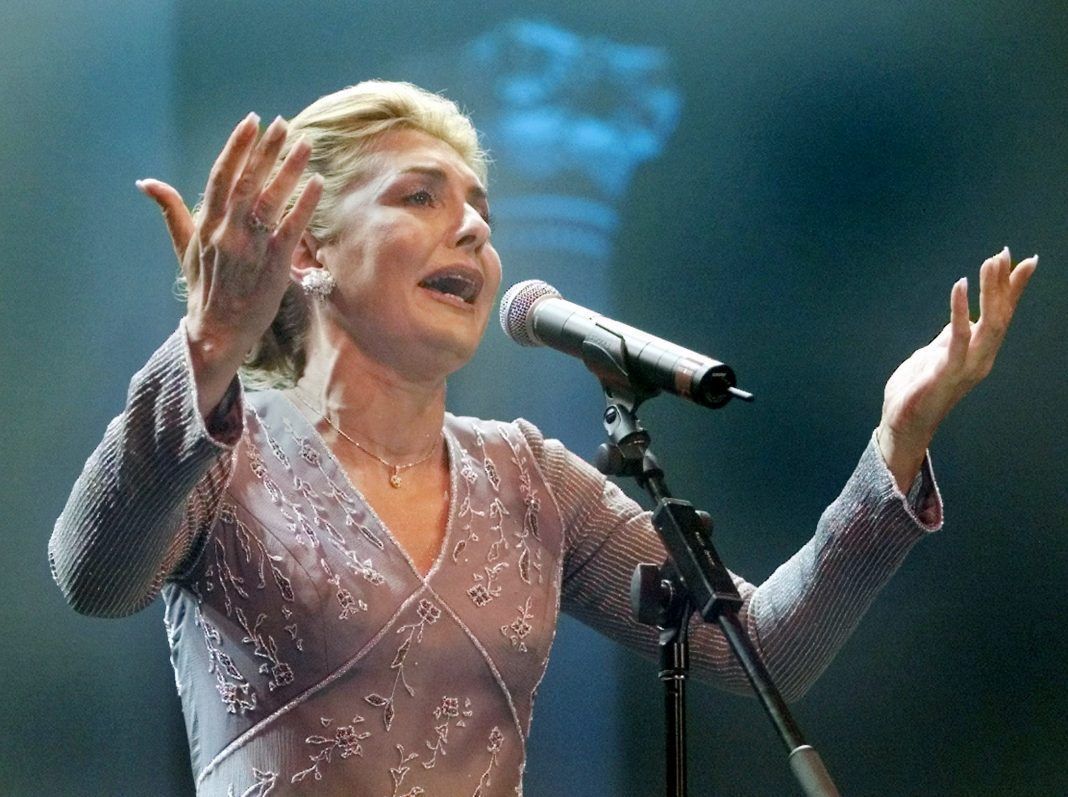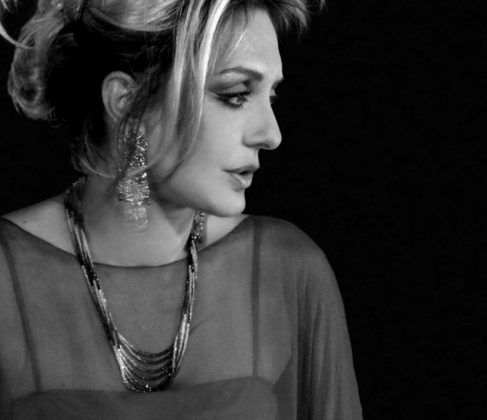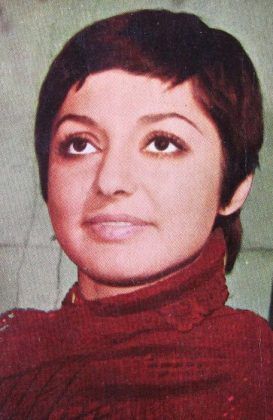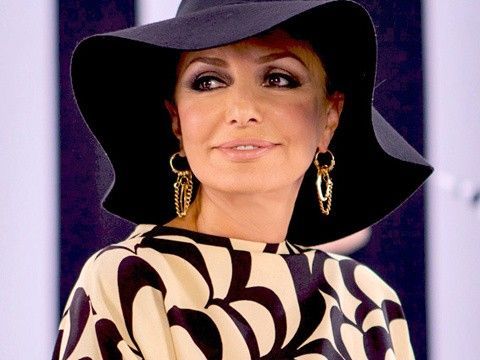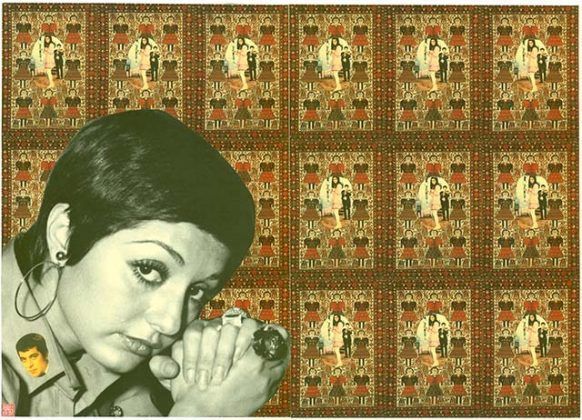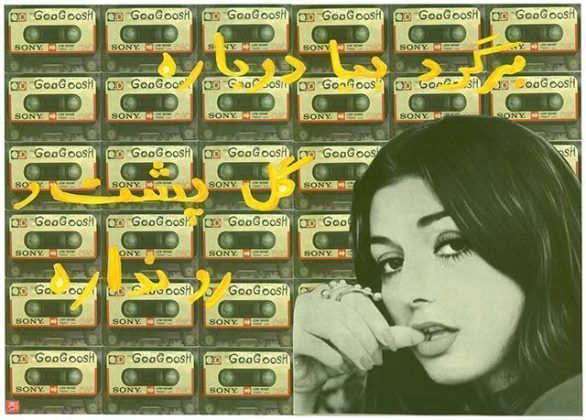By Nazanine Nouri
Googoosh took Paris by storm with a sold-out concert at the 3,700-seat Palais des Congrès on December 20, bringing audiences to their feet in a performance that drew laughter and tears and frequently referred to politics in Iran. Joining her on stage was the singer-songwriter Martik, the author of so many of her hit songs.
As Googoosh first appeared on stage singing ‘Talagh’ (‘Divorce’), video images beamed behind her showed the late Shah Mohammad Reza Pahlavi tearfully leaving Iran in January 1979. Later, as Googoosh delivered another moving song, photographs of many of the Iranians who lost their lives in the recent wave of fuel-price protests were projected in a performance that was live-streamed on Manoto TV.
[aesop_image img=”https://kayhanlife.com/wp-content/uploads/2019/12/javanan_aban98.jpg-protest-.jpg” panorama=”off” credit=”photographs of many of the Iranians who lost their lives in the recent wave of fuel-price protests. SOURCE: KAYHAN LONDON” align=”center” lightbox=”off” captionsrc=”custom” captionposition=”left” revealfx=”off” overlay_revealfx=”off”]
The concert was also an occasion for laughter, cheer, and nostalgia, as the pop star, dressed in black and sequined-pink outfits and platform sandals, soulfully belted out her lyrics. Videos of her singing those very same lyrics in pre-1979 Iran were simultaneously projected on the big screen behind.
Throughout the performance, Googoosh teased her adoring audience members and asked them to return to their seats, as they kept rushing to the front of the stage, taking selfies and videos and FaceTiming friends who couldn’t be there.
[aesop_image img=”https://kayhanlife.com/wp-content/uploads/2019/12/Googoosh217897898-e1576956026777.jpeg” panorama=”off” align=”center” lightbox=”off” captionsrc=”custom” captionposition=”left” revealfx=”off” overlay_revealfx=”off”]
[aesop_image img=”https://kayhanlife.com/wp-content/uploads/2019/12/Googoosh2178-e1576952576266.jpeg” panorama=”off” credit=”Googoosh in Paris. SOURCE: KAYHAN LIFE” align=”center” lightbox=”off” captionsrc=”custom” captionposition=”left” revealfx=”off” overlay_revealfx=”off”]
[aesop_image img=”https://kayhanlife.com/wp-content/uploads/2019/12/Googoosh21784332-e1576952694322.jpeg” panorama=”off” align=”center” lightbox=”off” captionsrc=”custom” captionposition=”left” revealfx=”off” overlay_revealfx=”off”]
“I really don’t understand: You’re here at a concert, and instead of watching the performance, you’re constantly looking at your phones!” said the superstar.
She also confessed that in her excitement to perform on stage, she had snapped the zipper on her pink trousers, and had it sewn back by members of her crew.
Googoosh is a national treasure to generations of Iranians, but also hugely popular in Central Asia and the Middle East. The prestigious French newspaper Le Monde once described her as “the diva assoluta [supreme] of Iranian variety.”
She was born Faegheh Atashin in Tehran on May 5, 1950. Her father Saber Atashin was an Iranian Azeri, and her mother Nasrin, an émigrée from Soviet Azerbaijan. She was named Faegheh after a clerk at the civil registry refused the name given to her by her father, Googoosh, which is an Armenian boy’s name.
Her parents divorced when she was two, and her father was awarded full custody of the child. Saber, who was an actor and acrobat, took Googoosh on the road, performing in towns and cities around the country, and using her as part of one of his own acrobatic acts. Soon recognizing her natural gift for singing and for impersonating well-known singers such as Delkash and Pouran, he put her on stage.
Her talent quickly eclipsed his own, as she drew enthusiastic crowds wherever they went. Googoosh became a paid performer from the age of four, and the family breadwinner.
She sang regularly in public, putting her own stamp on the songs of such established singers as Ghazal, Delkash, Elaheh and others. People from all over the country came to the ‘Shokoufeh Now’ cabaret in Tehran to see the child prodigy.
By the age of seven, she began her acting career in Bim va Omid (“Hope and Fear,” 1960) and Fereshteh Farari (“The Runaway Angel,” 1961), both written and directed by George [Gorgi] Obadiah. Being a professional performer from such an early age meant that she was unable to pursue an education, leaving school after her primary years.
Googoosh never got a chance to live with her mother, who remarried and was unable to see her until she was 13. Even then, they met secretly. She had a brother who was a year younger, and who would die at the age of 24, struck down by heart rheumatism.
Her father also remarried. Little Googoosh grew up with an abusive stepmother who put her in charge of raising one of her half-brothers – even as she was earning money for the family. Those were excruciatingly difficult years for the young girl, and she married at the age of 17 to break away from her painful home life.
By the 1960s, Googoosh was recording with Iran’s finest composers, releasing Ghesseyeh Vafa in 1966, the first of many compositions written for her by Parviz Maghsadi (with lyrics by Iraj Janatie Ataie). This would mark the beginning of a phenomenally successful career.
Her trendsetting hairstyles and fashion choices would soon be closely followed by a generation of Iranian women, who wore miniskirts when she did, and got a boyish “Googooshi” haircut as she did in 1975.
Googoosh would dominate Iranian popular music until the Islamic Revolution of 1979, combining elements of Iran’s traditionally melodramatic singing style with musical techniques drawn from soul, funk, rock and other forms of popular Western music.
In parallel, the pop icon pursued a movie career until just before the Iranian Revolution, starring in a total of 25 films. They included Partgahe Makhouf (“Cliff of Fear,” 1963), Sheitune Bala (“The Naughty One,” 1965), and Bita (1972), for which she received a Sepas Award in 1973.
Googoosh would also be the female lead in Mah-e Asal (“Honeymoon,” 1976), Hamsafar (“Fellow Traveler,” 1975) and Mamal Amricayi (1975) with her second husband, Behrouz Vossoughi, the most popular male actor of his time.
Her movie Dar Emtedadeh Shab (“Along the Night,” 1978), written and directed by Parviz Sayyad – with Saeed Kangarani in the lead male role – was released months before the Iranian Revolution. It would be one of the most successful Iranian motion pictures of all time.
Googoosh was married four times. In 1967, she was wedded to the music promoter and owner of Tehran’s ‘Miami’ nightclub, Mahmoud Ghorbani, with whom she had a son, Kambiz. They would divorce six years later, in 1972. Googoosh would move on to another short-lived marriage with the Iranian superstar actor Behrouz Vossoughi in 1975.
She married her third husband, Homayoun Mestaghi, just before the Revolution; the couple separated 12 years later. Her fourth husband Masoud Kimiai, whom she married in 1991, was a renowned movie director and part of the new wave of Iranian cinema. They divorced in 2003, after Googoosh left Iran.
Googoosh was in the U.S. in 1979 when the Iranian Revolution broke out. She decided to return to Iran. “They claimed that I worked for the SAVAK (the prerevolutionary secret police) and that I would be killed. I thought that if that was the case, I preferred it to happen in Iran,” she told Le Monde.
After her return, she was summoned for questioning four times by the Revolutionary Court, and imprisoned for a month at the outbreak of the Iran-Iraq war in 1980. She was banned from the stage, and distanced herself from music and from all public activities, leading a reclusive life for the next 21 years. Yet her music was never forgotten, and a black market in illicitly-produced Googoosh recordings flourished in Iran.
In 2000, during the presidency of Mohammad Khatami, Googoosh was granted permission to leave the country and accompany her husband, Masoud Kimiai, to Canada on a film project. She had a comeback tour that took her from Canada to the U.S., Germany, the U.K., Sweden, France, Austria and the UAE. Googoosh was subsequently ordered by the authorities not to return to Iran, and has been living in exile ever since.
[aesop_image img=”https://kayhanlife.com/wp-content/uploads/2019/12/2000-07-29T120000Z_657265856_RP2DRHYUJGAB_RTRMADP_3_CANADA-GOOGOOSH.jpg” panorama=”off” credit=”Legendary Iranian singer Googoosh. REUTERS./” align=”center” lightbox=”off” captionsrc=”custom” captionposition=”left” revealfx=”off” overlay_revealfx=”off”]
The diva’s comeback tour would be the first of many world tours taking her to North America, Europe, the UAE, Australia, Malaysia, Turkey, Iraqi Kurdistan, North Cyprus, Georgia and Armenia. She performed in such prestigious venues as New York’s Madison Square Garden (2006) and London’s Royal Albert Hall (2013).
Googoosh was also in the spotlight for her talent show, Googoosh Music Academy, which aired for three seasons starting in 2010 on the London-based satellite channel Manoto1. Secretly watched by millions in Iran, it became an instant hit, and a hot topic of conversation.
In 2014, the superstar was voted Best Iranian Female Artist at the World Music Awards.
In 2009, following Mahmoud Ahmadinejad’s victory in Iran’s presidential elections, Googoosh rallied outside the United Nations in New York for the release of political prisoners held by the Islamic Republic. In 2014, she made headlines again by speaking out against homophobia in Iran and backing the LGBT community. The video of her song Behesht (“Heaven”), written and directed by Navid Akhavan, portrays a young woman as seen through the eyes of her female lover, a relationship that’s frowned upon by her father and by society.

